
Get the latest tips on how to improve corrosion resistance, bioinertness, and reliability of HPLC tubing and instrumentation flow paths.
Challenging HPLC applications can require the use of corrosive mobile phases or can run the risk of sample carryover, protein fouling, and contamination. Those extreme tests result in LC system damage due to corrosion or more importantly can result in degraded test quality and false positive results.
A corrosion resistant, bioinert sampling and test system is critical to consistent, accurate HPLC test results. But over time flow path surfaces, namely stainless steel tubing and needles, can degrade and corrode due to frequent rinse cycles from aggressive chemicals like bleach. Corroded and pitted surfaces are perfect hiding places for sticky compounds like proteins. Here are some tips on how to improve HPLC tubing, needles and other bioinert HPLC flow paths.
Key Factors To Consider When Selecting A Coating for Bioinert HPLC Applications
Selecting the right inert coating can be challenging and costly. Stainless steel is an active surface that promotes protein retention. That's why various types of coatings have been used to improve the surface properties of medical devices for decades. Fluoropolymers (PEEK, AF1600) are most commonly used. Often these materials are limited in the surface properties they can provide, are not durable enough for the application, and/or are difficult to apply to the complex and challenging parts that are common in the medical industry. Here are some key factors to consider when selecting a bioinert coating.

Factors to consider when selecting bioinert materials:
- Improved analytical sensitivity, eliminating interaction with metal
- Coating is nontoxic, inert and produced with environmentally friendly process.
- Prevents non-specific protein binding for many target proteins, preventing false positive results.
- Corrosion resistant and durable.
- Able to be applied to surfaces without changing part tolerance or performance.
Stainless Steel & PEEK Issues
Common sample flowpath materials like stainless steel and PEEK can handle many LC applications but the most challenging applications can expose weaknesses in the flow path. Excessive heat, solvent damage, corrosion and adsorption can result in frequent maintenance, poor chromatography or false positive results.
- Stainless Steel Issues
Acid corrosion (Halogenated Solvents - HCl, HBr)
Ion chromatography & contamination
Anionic compounds (phosphates may chelate)
- Peek Issues
Temperature limitations(Tg148°C)
Halogenated solvent damage
THF (Tetrahydrofuran (Oxolane)) exposure, swelling of peek.
The need for a durable metal free sample pathway, solving protein carryover problems.
Carryover is the result of a sample binding to the flowpath surface which then releases or elutes during a later sampling event. The result is that peaks from the previous analysis may appear is a later test results. The carryover contamination may corrupt later tests, causing false positive results.
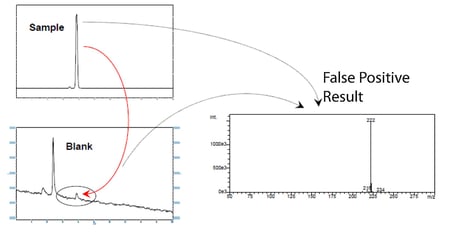
A recent study by Abbott Laboratories in Applied Surface Science demonstrates the inertness performance and corrosion resistance of inert silicon coatings. Comparative QCMD (quartz crystal microbalance with dissipation monitoring) characterization of SilcoTek's Dursan coating shows significant reduction in protein surface retention, preventing carryover and potential false positive test results.
Improve the bioinertness of your HPLC sample system.
Read the Abbott Laboratories paper.
The graph below shows the Dursan® surface (top line) returns to baseline weight after contact with the test protein analyte. The bottom line shows the stainless steel surface retaining the protein sample and not returning to baseline weight; indicating retention of protein. Read the entire paper.*
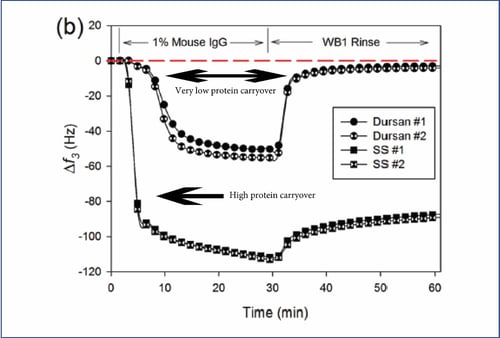
Corrosion resistant coating.
Chlorides (like HCl) and bleach can corrode stainless steel flowpaths, causing ion contamination and pitting of the LC flowpath. A metal free corrosion resistant coating like Dursan prevents contamination of the test sample.

A pitted surface can impact analyte flow, hide trace contaminants and result in excessive maintenance or system failures. Dursan's corrosion resistant surface prevents interaction with stainless steel surfaces, improving HPLC tubing corrosion resistance by an order of magnitude. An HPLC capable surface will benefit the flow path durability and inertness:
- Add reliable protection against pitting which can be a source of protein retention and carryover.
Comparative ASTM bleach immersion studies show Dursan prevents surface attack by preventing interaction of corrosive analytes or cleaning agents with the surface; outperforming other coatings or stainless steel surfaces by an order of magnitude.
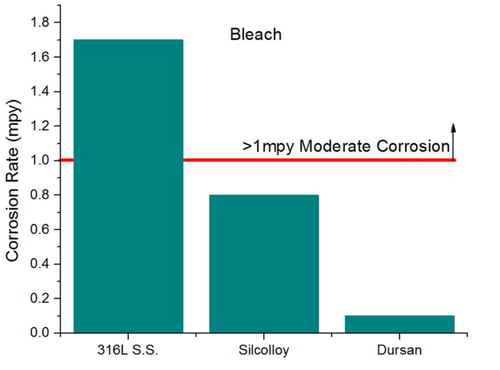
Prevent fouling.
Preventing buildup or fouling in flow paths will improve test accuracy and system flow performance. Dursan facilitates surfactant rinse performance; eliminating the potential of contaminant buildup. Benefits of an anti-fouling surface include:
- Proteins, blood, and bio-molecules should not stick to the coated surface.
- A non-stick surface will improve analytical sensitivity and reliability
- Increase device/instrument uptime and overall efficiency.
- Allow for easy and complete rinsing with a non-ionic surfactant.
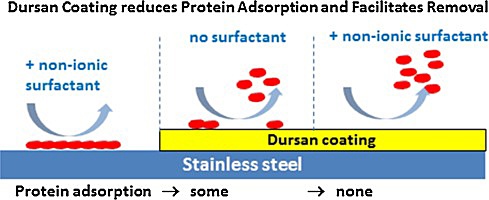
Coat places most coatings can't reach.
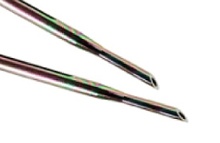 Find a coating that can improve performance and work within HPLC system tolerance and architecture. That means being able to coat flow path needles, tubing, fittings and precision components without changing the flow, function, or capability. Benefits of precision coatings include:
Find a coating that can improve performance and work within HPLC system tolerance and architecture. That means being able to coat flow path needles, tubing, fittings and precision components without changing the flow, function, or capability. Benefits of precision coatings include:
♦ Can coat the interior and exterior of narrow bore needles, narrow tubing, complex component designs, etc. Customers now have the ability to improve inertness and protect the entire sample flow path.
♦ High tolerance coating does not significantly change part dimensions or tolerances. The user can coat existing components and significantly improve performance without part redesign.
Coating durability
HPLC compatible surfaces must be durable. The surface must survive hundreds of injections, abrasion, and surface wear. Coatings must not flake or fail when the surface is flexed or suffers an impact. Watch our durability video and see for yourself.
Coating applications for optimizing bioseparation.
Typical applications for high durability inert coatings in bioinert applications include:
- Clinical chemistry and immunoassay analyzers
- Precision stainless steel tubing
- Mandrels, plungers, extrusion tips, dies
- Chemical vessels/containers
- Wires, wire coils, wire forms
|
- Guide wires
- Curettes
- Cannulas
- Screws, prostheses, plates
- Needles
|
- Syringes
- Sensor probes
- Catheters
- Knives, surgical tools, lab surfaces
|
Dursan® offers three critical surface properties in one along with a chemical vapor deposition (CVD) coating process that makes application easy and effective even on complex geometry components.
An inert, corrosion resistant, metal free HPLC coating such as Dursan® solves sampling flow path problems:
Dursan® Solutions
- Anti-Corrosion, especially HCl and bleach attack.
- Resistant to saltwater corrosion
|
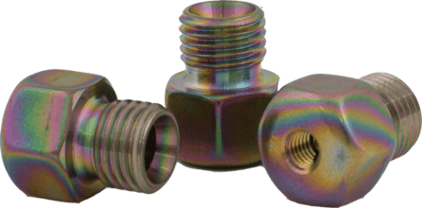 |
Learn more about bioinert coatings.

*Image courtesy of Abbott Laboratories










